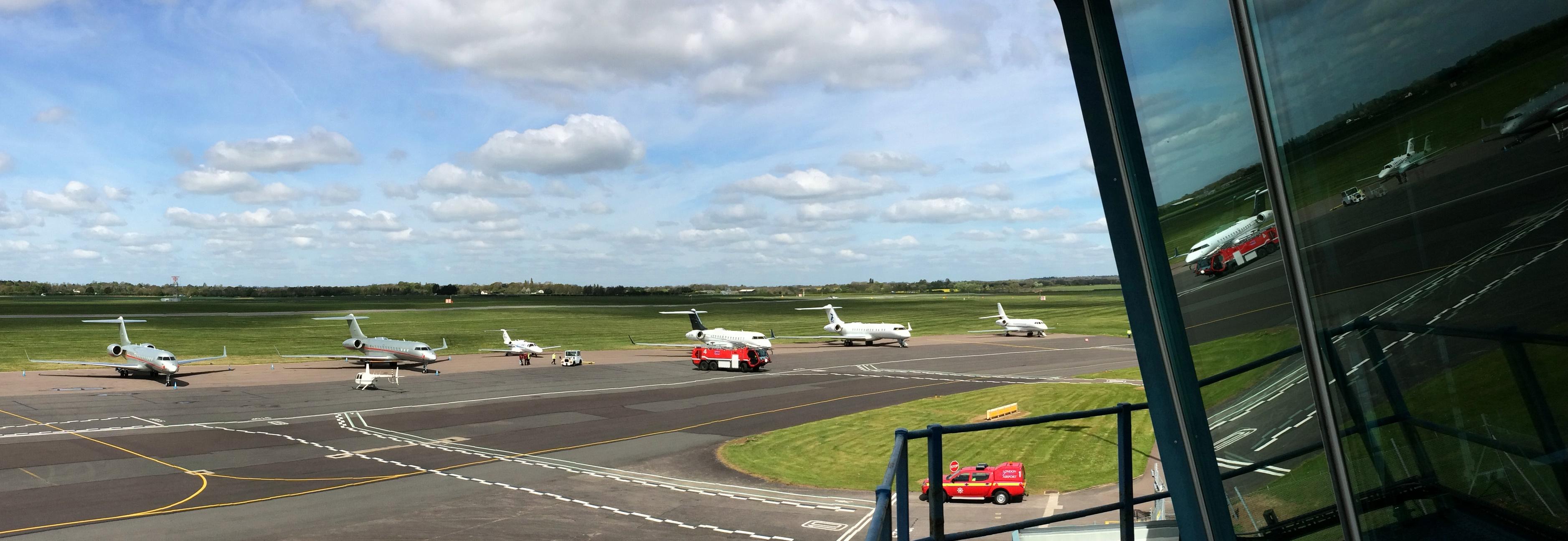Why GA Airports Are In COVID-19 Crosshairs

This is an abbreviated version of Angus Batey's article - ‘We’re On Our Own’: GA Airports In COVID-19 Crosshairs.
The global COVID-19 pandemic is creating vast difficulties and has inspired unprecedented levels of response.
But there will be those that fall between the cracks of even the most wide-reaching and well-constructed coronavirus mitigation programs. As airlines and providers of commercial air travel services continue to make robust cases to governments for state-level aid, smaller airports may be left to fend for themselves.
“I think we’re on our own, to be honest,” says James Dillon-Godfray, business development manager at Oxford Airport. The airfield, about 60 mi. northwest of central London, has just hosted its biggest-ever airplane—Embraer’s 195-E2, on the last leg of a worldwide demonstration tour. But the airfield’s primary users are helicopters and business aviation operators.
Read the full article to discover more about Oxford Airport and its key role in emergencies.
“What [Chancellor of the Exchequer, the UK’s treasury secretary] Mr. [Rishi] Sunak decides is an appropriate course of action for saving or rescuing airlines I cannot predict. But that won’t help us,” Dillon-Godfray says. “Specific airport-related assistance is going to be almost certainly for the larger airports, not the general-aviation sector. And I don’t think any local authorities will have much cash to spare for businesses of any kind. They’ve already made enormous cutbacks to so many services they provide. So I think we’re going to have to do whatever we need to do to protect our own interests.”
Dillon-Godfray says that so far none of those tenant organizations have asked airport management for rent reductions or a rescheduling of payments, though he expects this to happen as the crisis continues. The airport’s two largest tenants are CAE and Airbus Helicopters, whose activities are, respectively, concentrated on flight training and MRO-type activities. Both would appear to be somewhat insulated from the worst effects of a reduction in the airport’s standard inbound and outbound traffic flows. Yet both depend on a number of centrally provided functions which would have an impact on all users of the site.
It is currently not clear whether one individual deciding to self-isolate would simply deprive the airport of that controller, or whether colleagues who had worked with that person on preceding shifts would also be required to go into isolation as well. While some other airfield roles may be able to recruit short-term replacements, this is not possible for ATC.
“You can’t pull somebody from a subcontractor to cover the tower,” Dillon-Godfray says. “It probably takes three months to get someone validated to work locally, to be familiar with the airport and the local airspace we lie within.”
Finding space for a large number of jets while remaining open for flying business would be a challenge, but far from an insurmountable one.
Read the full article - ‘We’re On Our Own’: GA Airports In COVID-19 Crosshairs by Angus Batey - published March 20, 2020.